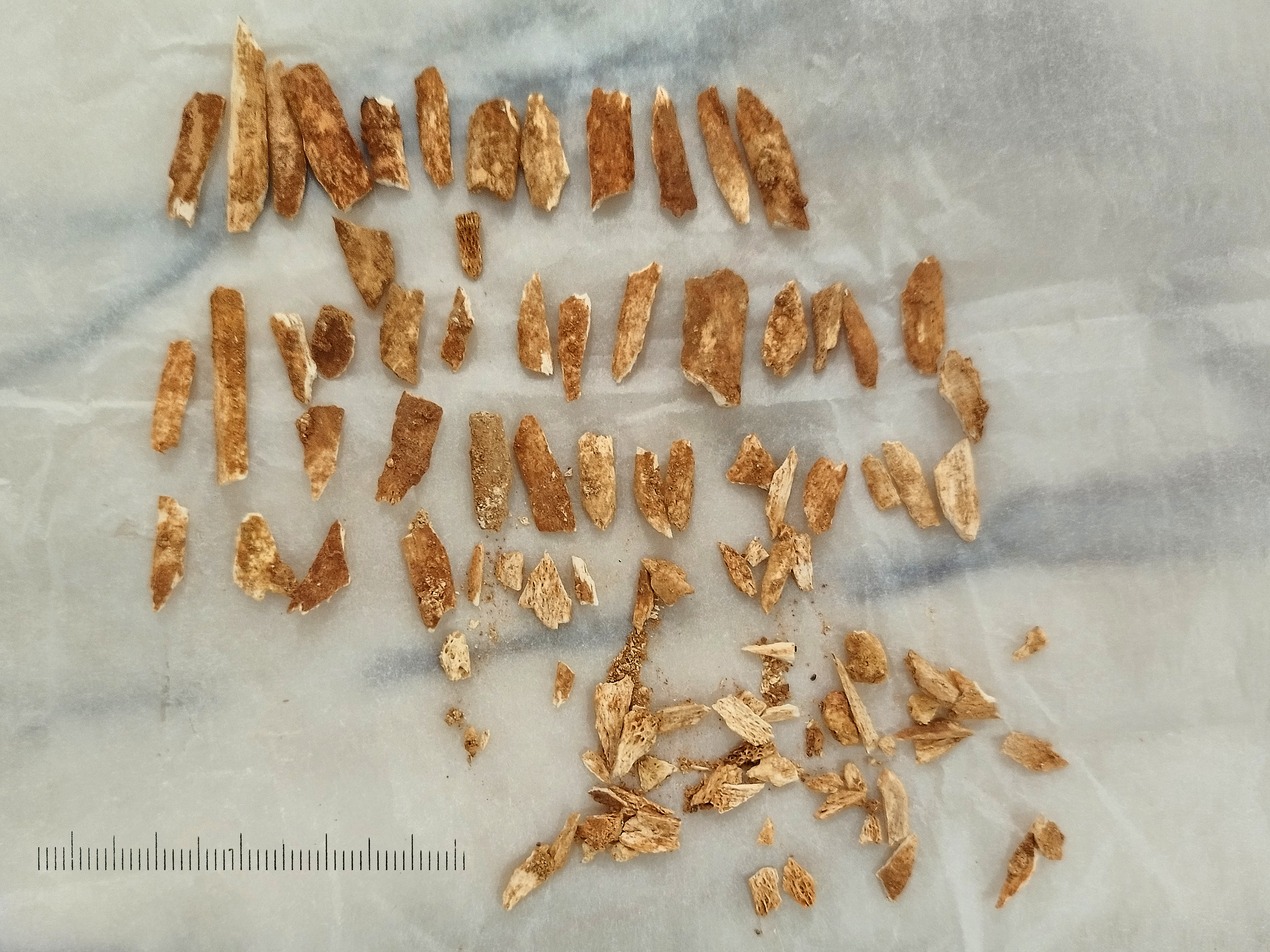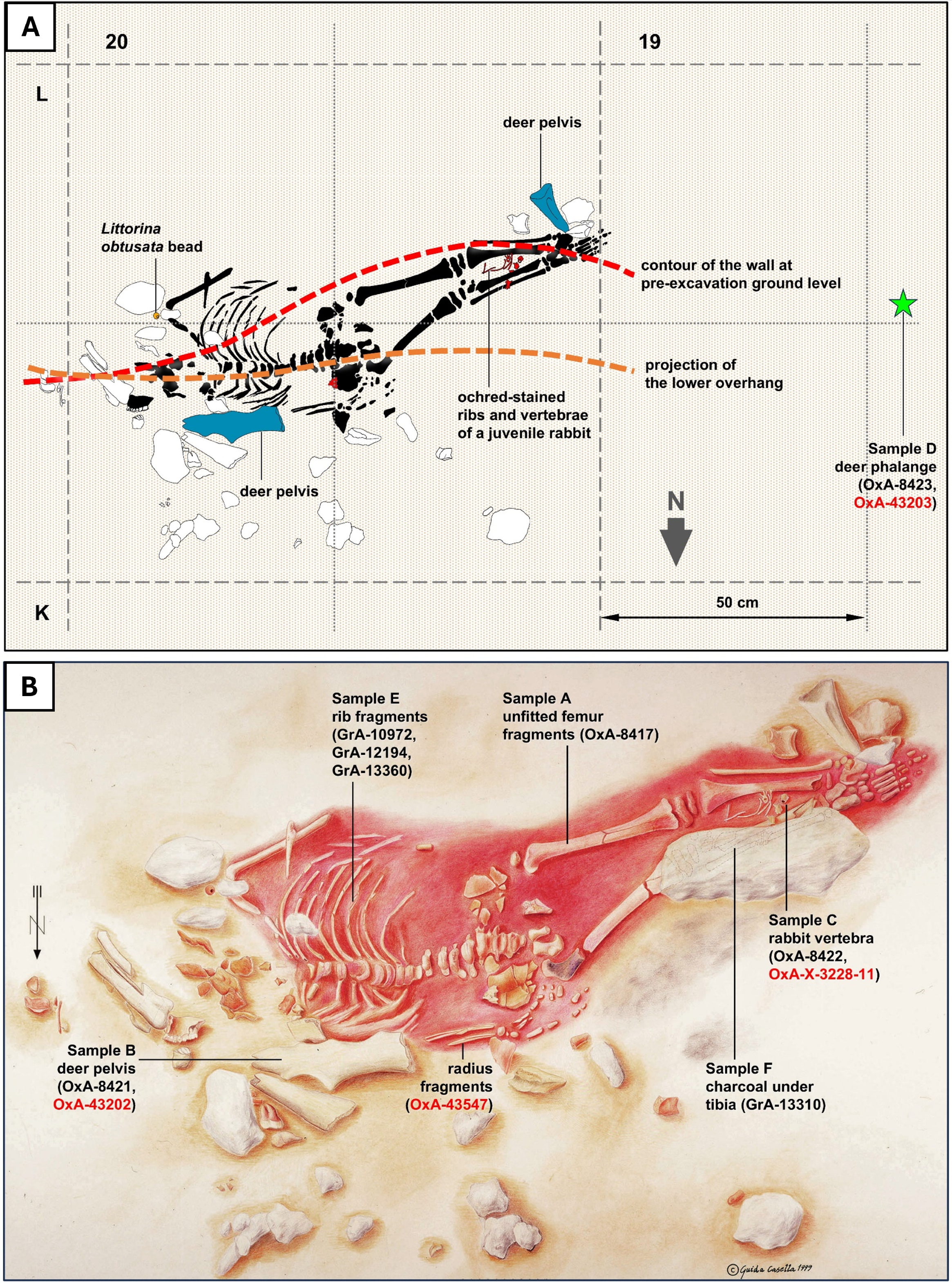A group of ancient humans with shades of Neanderthal in their physical appearance may have forsaken their home of 300 years following the death of a young member of their clan. As researchers piece together the events surrounding this prehistoric tragedy, it’s beginning to look as though a social taboo may have kept people away from the site for thousands of years.
ADVERTISEMENT
Over the Christmas holidays of 1998, archaeologists in Portugal made a seismic discovery that transformed our understanding of our own prehistory. The skeleton of a child that looked a little bit Neanderthal, a little bit modern human, was unearthed at the Abrigo do Lagar Velho site, thus confirming that our ancient ancestors had interbred with other extinct hominid lineages.
Using ultra-precise dating methods, researchers have now narrowed down the age of the skeleton and other animal bones found within the grave, thus enabling a reconstruction of the events surrounding the child’s death and burial. Previous estimates had suggested that the so-called Lapedo Child had lived and died a little under 30,000 years ago, and the results of the new study confirm that the death occurred between 27,800 and 28,500 years ago – more than 10 millennia after Neanderthals became extinct.
“This child belonged to a population which itself descended from events of extensive admixture at the time of contact between Neanderthals and modern humans in Iberia, many millennia before the time the child was alive,” said Professor João Zilhão from the University of Lisbon, who was part of the team that made the original discovery over a quarter of a century ago. “For diagnostic Neanderthal features to have persisted for so long, after thousands of years in this population, it had to be the case that admixture between both groups had been extensive – ie the rule and not the exception,” he told IFLScience.

Fragments of bone from the Lapedo Child’s right arm.
Image credit: Cidália Duarte
The Lapedo Child therefore provided the smoking gun that proved that modern humans and Neanderthals mated consistently, thus transforming our appearance and other attributes forever. Subsequent discoveries in Romania and the Czech Republic later confirmed that all humans living during this same period displayed a mosaic of Neanderthal and Homo sapiens traits, and all non-African populations alive today continue to carry 2 to 4 percent Neanderthal DNA.
To learn more about the Lapedo Child, study author Dr Bethan Linscott used a technique called hydroxyproline dating in order to avoid contaminants in the bones and attain a reliable age. “This is now the gold standard in terms of radiocarbon dating, particularly for samples that are reaching the limit of the radiocarbon method, around 50,000 years,” she told IFLScience.
“If you have a tiny bit of contamination at that age, it’s going to skew things off by several thousand years,” she said.
Perhaps the death event resulted in the site becoming taboo and a social rule to avoid it was put in place until the memory of the event faded away.
Professor João Zilhão
The new findings confirm that the burial was the final act of the site’s initial period of occupation as a butchering camp. For around 300 years, a group of prehistoric humans processed game carcasses at the western end of the shelter, yet abandoned it after interring the child at the opposite end of the site.
It would be more than 2,000 years before the location was re-visited by humans.
“It is tempting to speculate that it was the death of the child and the emplacement of the burial at the site that led to its abandonment,” said Zilhão. “Perhaps the death event resulted in the site becoming taboo and a social rule to avoid it was put in place until the memory of the event faded away.”
ADVERTISEMENT
Furthermore, the presence of red deer pelvic bones within the burial had previously led to the suspicion that meat may have been inserted into the grave as a kind of offering, yet the study’s results show that these bones are in fact considerably older than the child’s skeleton. According to the authors, it now seems more likely that these deer bones were used “as wedges to help with the positioning of the body in the burial pit”.

The Lapedo Child’s burial.
Image credit: (A) J.Z. and (B) G. Casella
In contrast, a rabbit skeleton found within the grave turned out to be the same age as the Lapedo Child. Stained with the same red ocher that once covered the youngster’s burial shroud, the rodent does appear to have been included as a burial offering.
“So in terms of the grave, we can now say that the sequence of events was that they opened the pit, the shrouded body of the child was laid down and probably accommodated using bones lying around,” said Zilhão. “The rabbit was put on top of the shroud, and then the whole thing was covered with sediment and remained so until Christmas of 1998.”
The study has been published in the journal Science Advances.
Source Link: Death Of Neanderthal-Like Human Child Linked To “Taboo” Site’s Abandonment